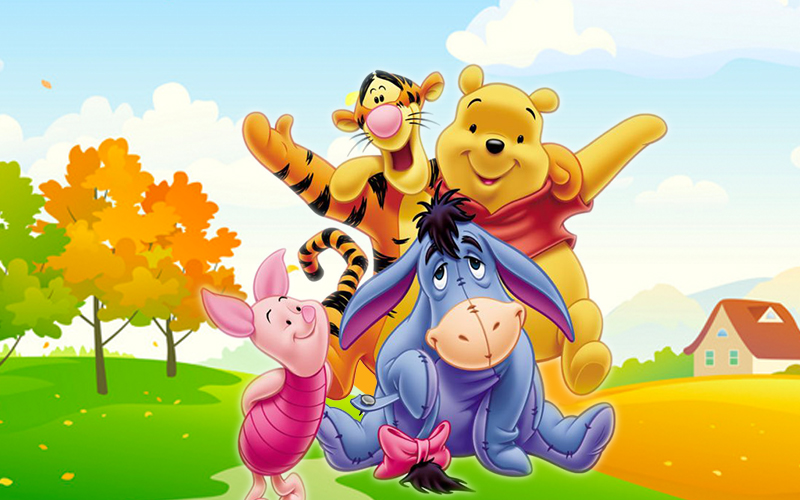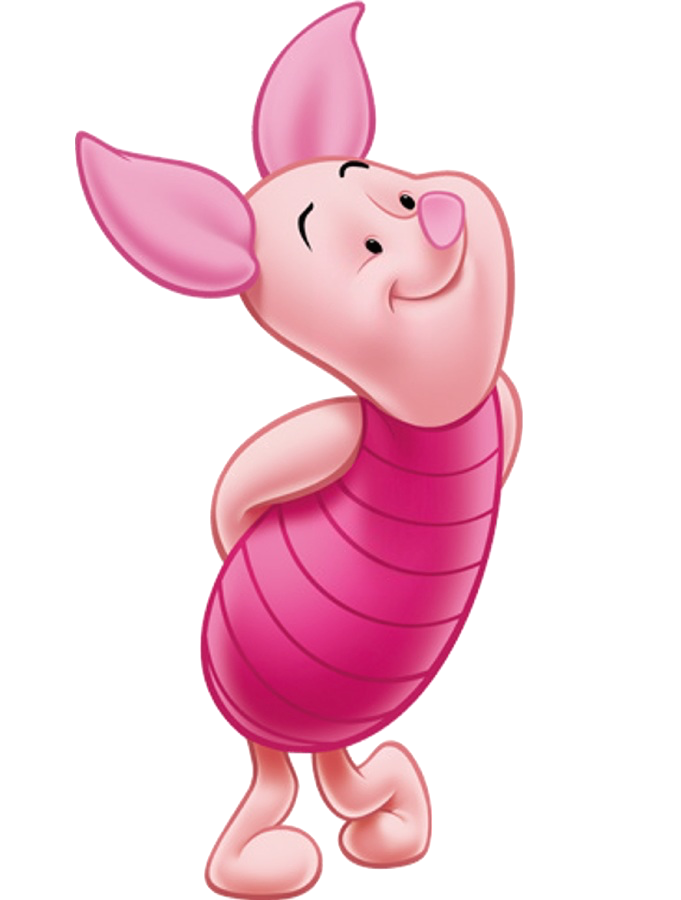
Sensory Processing Disorder (SPD) occurs in each sensory system (Visual, Tactile, Olfactory, Auditory, Vestibular, Proprioceptive and Taste) and the manifestations may vary for each subtype. This is why SPD is difficult to diagnose as some children have a combination of systems that are involved. Every child requires an individual assessment with an occupational therapist and their own individual plan for a sensory diet.
Children with SPD cannot correctly interpret everyday sensory information. Some children may crave sensory experiences and others may completely avoid them or be unaware of the sensations. This misinterpretation will affect their body awareness and can result in challenges with sensory motor skill development.
Below is an analogy of the sensory systems as experience by characters in AA Milne’s Winnie the Pooh series. I hope that this will help in your understanding and identification of your child’s sensory needs.
Who is Tigger?

Tigger is our sensory seeker. He is actively seeking and craving vestibular and proprioceptive input. He is constantly bouncing, full of energy, outgoing and loves to have fun. He rarely sits still, does not understand personal space and is always too close to his friends and bumping into them. Tigger is fearless, resourceful and optimistic. Sensory seekers are often thought to have Attention Deficit Hyperactivity Disorder. He has difficulty controlling his hyperactivity and is deemed impulsive. Tigger is full of energy, outgoing, loves to have fun and is a social magnet.
| Challenges | Strengths |
| Unable to sit still Difficulty focusing on a task Unable to start and complete tasks Difficulty with motor planning – jumps too close to people Oral praxis – cannot pronounce words correctly (‘ridickerus’ (ridiculous)) | Enthusiastic about tasks Sociable Optimistic Constantly engaging in different tasks and ideas Has many friends |
Who is Rabbit?

Rabbit is our sensory avoider. He tends to avoid sensory input much more than others. He has a low threshold for sensory information and will try to actively remove himself from these situations. Rabbit will retreat from unfamiliar situations and will find it useful to create structure because structure provides predictability. Rabbit likes to be alone and prefers environments with limited sensory input. Rabbit is a good friend, however he is often irritable, angry and easily frustrated. Rabbit is always organized and has lists for all his activities. He borders on obsession with rules, planning and having everything in order. Rabbit bosses his friends around but deep down he is very endearing.
| Challenges | Strengths |
| Not always considerate of others Potentially a poor team player May be more prone to sensory triggers in the environment which may result in challenging behaviours | Well organized Thrives on structure and routine Takes pride in his work Displays self confidence in tasks |
Who is Eeyore?

Eeyore is our ‘low registration’ child. He responds to sensory sensations much less than others and has a high threshold for sensory information and needs a lot of it but sometimes does not detect stimuli that others may notice. Eeyore is passive and this may result in a lack of focus, being distractible and missed learning opportunities. He is sometimes not aware of his body and needs more sensory input to stay alert. He is passive and may appear lazy, withdrawn and uninterested. His catch phrase is, “Thanks for noticing.”, which may be indicative of himself. He may also present with low postural tone and a flat affect.
| Challenges | Strengths |
| Low tone and postural challenges Uninterested in tasks Easily manipulated by friends, will not stand up for themselves Quiet, often overlooked Difficulty with problem solving skills Challenges with engagement | When engaged in a specific task, will present with good focus Not easily affected by other children (Tigger) or busy environments May be empathetic to other children |
Who is Piglet?

Piglet is our sensory sensitive child. Piglet responds to sensations much more than others but presents with a low threshold and acts passively. He is aware of every stimulus that is available and cannot habituate to the stimuli. Piglet becomes so distracted by this additional input that it can interfere with his participation. Piglet is nervous, fidgety and always hesitates before speaking and is constantly worried about potential disaster (incoming sensory input in this case). He is kind and gentle and keeps his house neat to create order.
| Challenges | Strengths |
| Low self esteem and can easily be taken advantage of Hesistant Does not articulate well, can easily be overlooked Struggles in big, open areas with lots of sensory input | Can structure and plan well and keeps things neat Tends to use less words and more demonstration |
So the big question now would be :
Who is Winnie the Pooh?

In terms of the Alert programme, Winnie the pooh is often referred to as having his engine running as “Just Right”. I suppose that we could argue that this is the case because children identify with him as the main character, or is it possibly, that when we compare him to Tigger and Eeyore, he is in the middle?
One could confidently state that he is more thoughtful, takes his time to respond appropriately to sensory input, and is always in a ‘good mood’. Careful examination of his sensory systems could also reflect a low threshold for knowing when he is full, resulting in overeating of ‘hunny’.
For our purposes, we can use Winnie the Pooh as an example to our children to demonstrate how their engine could be ‘Just Right’.
DEVELOPING A SENSORY DIET?
The first step to helping a child with sensory processing disorder is to understand exactly how this child is registering and processing sensory information. As therapists, teachers, and parents we should always offer support and understanding to our children.
A sensory diet is so much more than standard list of play activities that are prescribed for every child. Having the knowledge and understanding of how and why these activities are used are essential to your child’s success.
We all enjoy sensory activities that are enjoyable. A deep muscle massage at the end of work day or snuggling up under a soft blanket with a cup of cocoa. We also avoid activities that provide unpleasant sensations such as walking barefoot on a rocky path or a scratchy jumper. Similarly, our children have preferences for their own sensory input.
The key to developing a sensory diet is to carefully consider your child’s interests and work together with your occupational therapist to strategize and develop a set of activities that are both exciting and effective for your child. Your therapist will follow a structured protocol of firstly identifying your child’s needs, strategizing with yourself on the activities, followed by the implementation of the sensory diet. This should be carefully monitored and weekly check in sessions with your therapist will be necessary, to adjust some activities to individualize the sensory diet.
Remember the success of the sensory diet is in the carryover of strategies both at home and in the classroom.
Sources:
- Williams, M. & Shellenberg, S., 1996. How does your Engine Run? A Leaders Guide to the Alert Programme for Self Regulation.. 1 ed
- A.A.Milne, 1994. The Complete Tales of Winnie the Pooh. New York: Dutton Children’s Books. Canadian, M. A., 2012. Hall of Fame
- www.spdstar.org
- SAISI Newsletter, Volume 25, Number 1,2015. Sensory processing. Profile of our 100 Acre Wood Friends, Ray Ann Cook.





